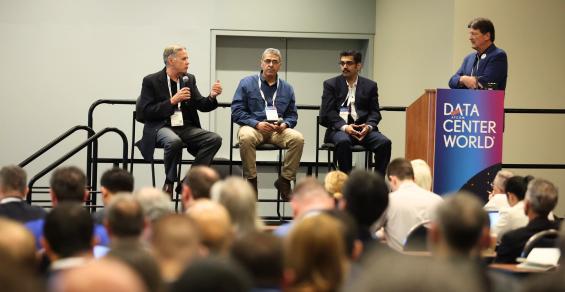So, what's the main difference between where we are now and what she described? "Now" might be described (with a little help from a certain '90s grunge band of the same name) as "Come As You Are," "Nevermind," or something equally dire.
"IT management nirvana," on the other hand, requires a coherent way to control your IT environment, regardless of whether you're talking about physical or virtual components. The good news: I think CA is addressing that combined requirement pretty well, and this week's announcements help.
 One of the things I've liked about the CA story that I've heard since I joined is the way in which the company directly addresses the day-to-day, pragmatic interests of users. Breaking down management silos is one of the keys to that. It's also worth noting that a bunch of other aspects of IT control -- big, grown-up, important concepts -- are front and center. Management, governance, automation, and security are all in the first paragraph of CA's press release regarding virtualization management -- topics that were certainly not highlighted nor addressed by many industry players even just six months ago.
One of the things I've liked about the CA story that I've heard since I joined is the way in which the company directly addresses the day-to-day, pragmatic interests of users. Breaking down management silos is one of the keys to that. It's also worth noting that a bunch of other aspects of IT control -- big, grown-up, important concepts -- are front and center. Management, governance, automation, and security are all in the first paragraph of CA's press release regarding virtualization management -- topics that were certainly not highlighted nor addressed by many industry players even just six months ago.Getting to "IT management nirvana" may not be exactly only about pragmatism, but nevertheless, I think it's some of the practical parts of this week's announcements that are worth noting. In particular:
· Single pane of glass for physical & virtual management. The root-cause analysis capabilities of the new CA Spectrum Service Assurance product take both the physical & virtual into account. It's designed to offer one place to display the impact of the physical & virtual IT infrastructure on the services it supports. Mike Vizard's CTO Edge write-up about this announcement gives you a peek into what the product's interface looks like, in case you're curious.
· Provisioning across physical & virtual infrastructures. Enabling application configuration management and dynamic resource provisioning is hard. Being able to do that across internal physical, virtual, and even external cloud environments is really hard. CA Spectrum Automation Manager has now added this, plus another neat little trick: rapid physical-to-virtual and virtual-to-virtual server provisioning.
· Cross-virtualization management. Add to the things mentioned above broad support for virtualization technologies like VMware vSphere, Citrix Xen, IBM LPAR, and Sun Solaris, and it's another reason it's worth noting. There are a few more holes to fill (Microsoft Hyper-V comes to mind), but it makes a great cross-VM story. What CA Spectrum Automation Manager now has in its cross-virtualization support is beyond what we were doing at Cassatt. You can see some earlier discussion of across-multiple-hypervisor management in this post.
· For VMware lovers out there, there's even more. A couple of the other products (you can find details about which ones in the CA press release) help discover more about VMware and performance issues, including database performance before, during, and after VMware VMotion migrations. In fact, there are a bunch more virtualization features scattered across many product lines that work in conjunction with your VMware technology. (Again, it's kind of nice to have answers to a lot of the broad management questions that customers are asking by virtue of an extensive product portfolio.)
Making a bet that integrated management is better
You'll notice that CA is putting its weight behind the concept that having a unified management capability is more efficient and more powerful for an IT organization. That's not unexpected given the breadth of management capabilities that CA can offer a customer. But, it's also in line with the complex environments that large customers actually have. But is it how they want to manage things?
Mike Vizard, again in his CTO Edge article, weighed in with one view: "At the moment," said Vizard, "customers seem to be favoring [an] integration strategy between existing systems management tools and providers of dedicated virtual machine management tools. Over the long haul, odds are good that customers will ultimately want to see more convergence of these tools rather than continuing to pay separate licensing fees for both," wrote Vizard.
Delivering tools that can provide this convergence, and seeing customers have great success with them, is the thing that will tip the balance. And in the end, that's probably a balance that will favor the customer. Vizard said something similar back in September when CA announced the deal to acquire NetQoS, postulating that "it will also ultimately prove a lot less expensive [to have unified management tools] than managing a whole slew of point products."
All that certainly sounds more like IT management nirvana (and certainly more harmonious and under control than the aforementioned namesake band from Seattle often was). Hopefully, these tools and others it inspires in the marketplace will gets us a step closer.
And, if any of my Nirvana references don't quite hit the mark: All Apologies. Blame Denise. Or her headline writer.







